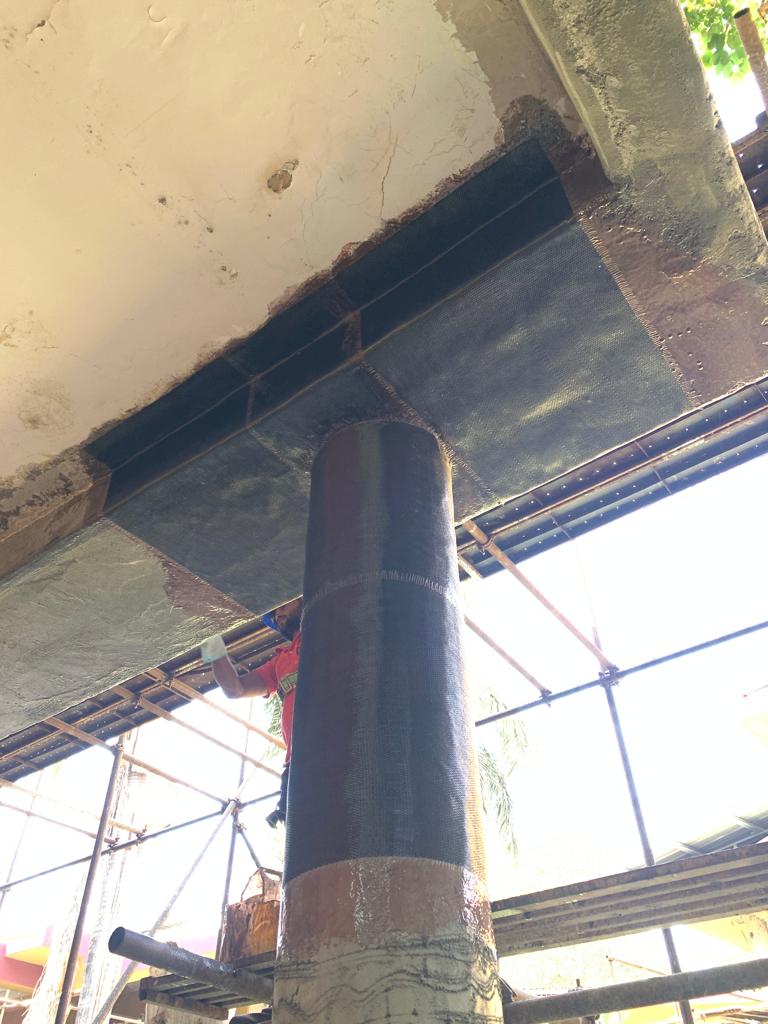
Modern infrastructure in India is growing rapidly, but many existing buildings and bridges face issues due to aging, design limitations, or increased load demands. Flexural strengthening has become one of the most effective methods to improve structural performance without complete reconstruction. From residential apartments to large commercial complexes, flexural strengthening solutions are helping extend service life, enhance durability, and ensure safety. This technique is particularly relevant in urban areas where construction demands continue rising.
What is Flexural Strengthening?
Flexural strengthening refers to improving a structure’s ability to withstand bending and shear forces without failure. In simple terms, it enhances the load-carrying capacity of beams, slabs, and girders. When structures are designed for lower loads but later face higher stress due to usage changes, flexural strengthening becomes essential. It prevents cracks, deflections, and potential collapse. The technique is widely used in schools, hospitals, residential towers, and bridges where safety is a primary concern.
Why Do Structures Need Flexural Strengthening?
In India, many structures are over 20–30 years old and were designed according to outdated codes. With changing occupancy, increased loads from modern equipment, and seismic safety requirements, these buildings face structural stress. Flexural strengthening methods allow engineers to upgrade such structures without demolition. For instance, when converting an office into a shopping mall or adding new floors to an existing building, flexural strengthening ensures the structure can handle the additional loads effectively.
Common Causes of Flexural Deficiencies
Flexural deficiencies occur due to several reasons, ranging from poor construction practices to natural wear. Inadequate reinforcement, corrosion of steel bars, excessive loading, or poor-quality concrete often lead to reduced flexural capacity. Earthquakes, fire damage, and design errors also play a role. In cities like Mumbai, Delhi, and Bengaluru, older high-rise buildings frequently require flexural strengthening due to rapid urban transformation. Identifying these issues early through professional structural audits is key to long-term safety.
Popular Flexural Strengthening Techniques
Different techniques are used depending on the structure’s condition and required load capacity. Carbon fiber reinforced polymer (CFRP) wrapping is one of the most advanced methods, offering high strength without adding significant weight. Steel plate bonding, post-tensioning, and section enlargement are also widely applied. Each method has unique advantages, and the choice depends on structural requirements, budget, and project scope. Engineers often combine methods to achieve long-term durability and optimal performance.
Carbon Fiber Wrapping for Flexural Strengthening
Among modern solutions, carbon fiber wrap concrete beams are highly popular due to their lightweight nature and superior strength. CFRP sheets or laminates are bonded to structural members, providing excellent resistance against bending. This method does not increase structural dimensions, making it ideal for buildings with space limitations. Additionally, carbon fiber wrapping offers corrosion resistance, long service life, and minimal maintenance. It is increasingly used in metro stations, bridges, and commercial complexes across India.
Flexural Strengthening in Bridges and Flyovers
India’s growing infrastructure, including metro networks and flyovers, faces rising traffic loads every year. Many older bridges were not designed for present-day heavy vehicles, leading to stress and cracks. Flexural strengthening of bridges ensures they can safely handle increased loads without reconstruction. Techniques like CFRP wrapping and steel jacketing are commonly applied to girders and slabs. This not only extends bridge life but also minimizes disruption, as strengthening work can often be done without major traffic delays.
Flexural Strengthening for Earthquake Resistance
Seismic activity is a major concern in regions like Gujarat, Delhi-NCR, and the Himalayan belt. Structures that were not originally designed for earthquake resistance are at higher risk. Flexural strengthening methods improve ductility and energy absorption, helping structures withstand seismic forces. CFRP wrapping, jacketing, and advanced reinforcement techniques provide significant improvements in earthquake performance. This makes flexural strengthening a cost-effective solution for retrofitting vulnerable structures in earthquake-prone regions of India.
Flexural Strengthening vs. Reconstruction
A common question property owners ask is whether strengthening or complete reconstruction is better. Demolishing and rebuilding not only costs more but also leads to longer downtime and environmental waste. On the other hand, flexural strengthening of concrete beams and slabs provides a faster, more sustainable, and affordable alternative. It allows occupants to continue using the building during strengthening works, reducing inconvenience. This makes strengthening the preferred choice in most cases where the structure is salvageable.
Benefits of Flexural Strengthening
The advantages of flexural strengthening go beyond safety. It helps extend service life, prevents costly future repairs, improves seismic performance, and enhances structural reliability. For property developers, it allows adaptation of old buildings for new uses without demolition. For government projects, it ensures bridges and public infrastructure remain functional under heavy usage. By combining cost savings, safety, and sustainability, flexural strengthening is becoming a top choice for property owners and engineers across India.
Future of Flexural Strengthening in India
With rapid urbanization and smart city development, India’s demand for structural retrofitting will only rise. Flexural strengthening will play a vital role in upgrading old housing societies, industrial plants, and transport infrastructure. The adoption of advanced technologies such as carbon fiber, high-performance concrete, and automated strengthening methods will continue growing. As awareness increases, more property owners and government authorities are expected to adopt strengthening as a sustainable alternative to reconstruction.
Flexural strengthening is more than just a technical solution it is an investment in safety, sustainability, and long-term reliability. With techniques like carbon fiber wrapping and steel plate bonding, structures can meet modern demands without demolition. As India continues to expand, the role of flexural strengthening of beams, slabs, and bridges will become increasingly important. For property owners, developers, and government agencies, choosing strengthening ensures safer, more durable, and future-ready infrastructure.